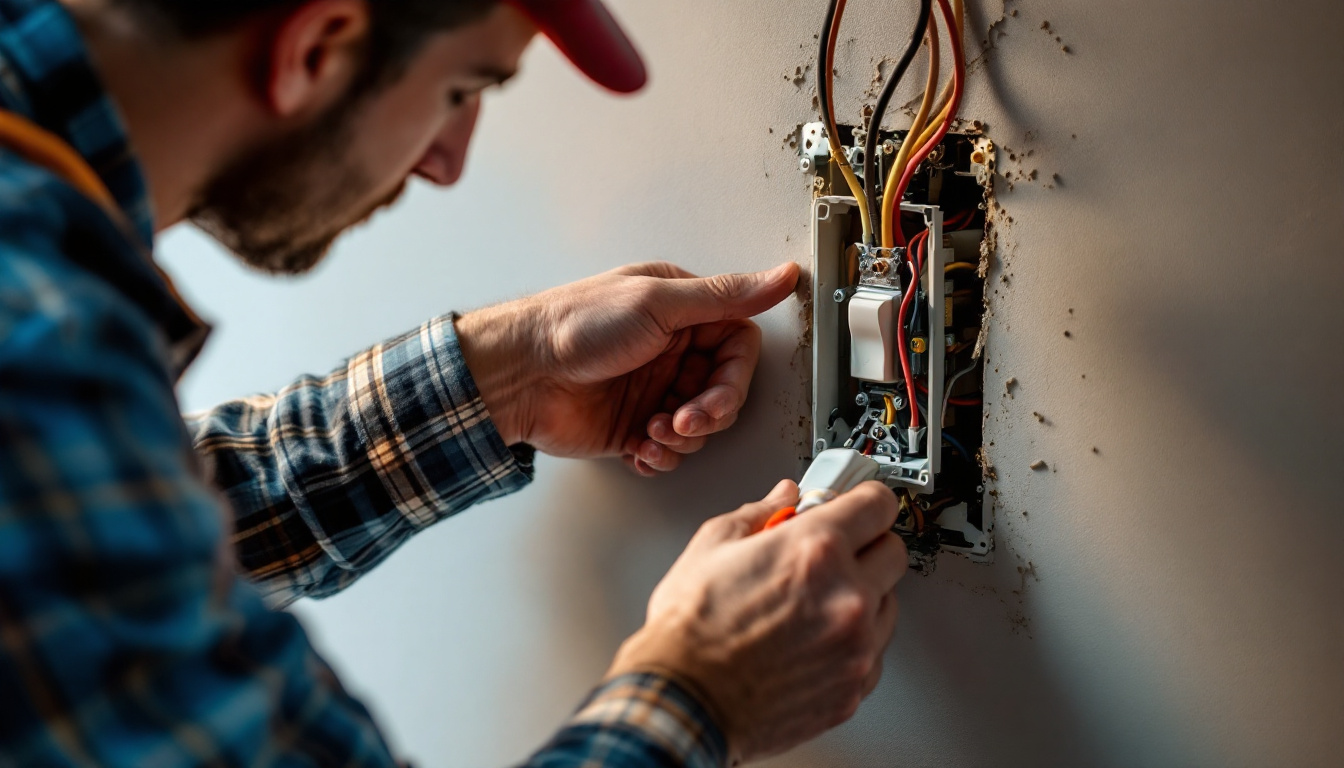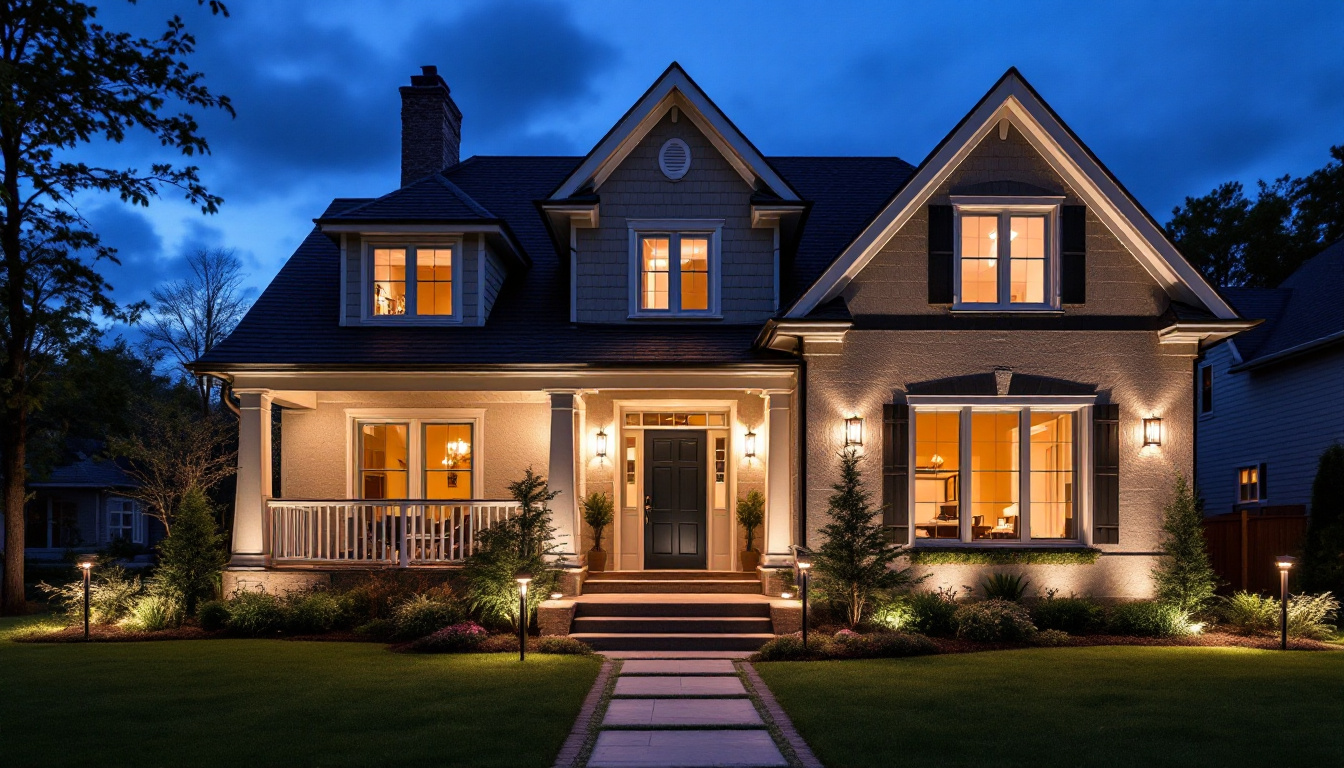

lighting contractors often face unique challenges when it comes to installing electrical systems, particularly when dealing with back-to-back electrical boxes for switches and receptacles. This setup can streamline installations and save space, but it also introduces a range of complexities that require careful consideration. Understanding these challenges is crucial for ensuring a successful project and maintaining client satisfaction.
Back-to-back electrical boxes are designed to accommodate two devices—typically a switch and a receptacle—on opposite sides of a wall. This configuration is particularly useful in situations where space is limited or where aesthetic considerations dictate a clean, uncluttered look. However, the installation of these boxes requires a thorough understanding of electrical codes, wiring practices, and the physical constraints of the installation environment.
One of the primary advantages of back-to-back electrical boxes is their ability to maximize space. By consolidating two devices into a single box, contractors can reduce the number of boxes needed, which can be particularly beneficial in smaller rooms or tight spaces. However, this efficiency comes with its own set of challenges.
Designing the layout for back-to-back installations requires careful planning. Contractors must consider not only the physical dimensions of the boxes but also the positioning of switches and receptacles to ensure ease of use. Misalignment can lead to user frustration and may necessitate costly rework. Furthermore, the choice of materials for the boxes can also impact the overall installation. For instance, metal boxes may provide better grounding and durability, while plastic boxes can be lighter and easier to handle. Each material has its own set of advantages and disadvantages, and the decision often hinges on the specific requirements of the project.
Electrical codes vary by region, but they generally emphasize safety and proper installation practices. When installing back-to-back boxes, contractors must ensure that they comply with local regulations regarding spacing, wiring methods, and device ratings. Failure to adhere to these codes can result in safety hazards and potential liability issues.
Additionally, the proximity of the devices can create challenges in terms of heat dissipation and electrical interference. Proper spacing and ventilation are essential to prevent overheating and ensure that devices operate safely and effectively. It is also crucial to consider the load that each device will handle; for instance, if one side of the box is a high-wattage appliance, the other side must be rated appropriately to handle any potential electrical surges. This careful consideration not only enhances safety but also contributes to the longevity of the devices installed within the boxes, ensuring they function optimally over time.
Wiring back-to-back electrical boxes can be more complex than traditional installations. The need to connect multiple devices within a confined space requires a thorough understanding of wiring techniques and best practices.
One of the first challenges contractors face is managing wire lengths. In a back-to-back installation, wires must be routed carefully to avoid tangling or excessive strain on connections. This can be particularly tricky when working with multiple circuits or when the boxes are located in hard-to-reach areas.
Properly securing and organizing wires is essential to prevent future issues. Loose wires can lead to short circuits, while overly tight connections can cause damage over time. Using appropriate connectors and ensuring that all connections are secure can mitigate these risks. Additionally, employing wire management solutions such as cable ties, raceways, or wire looms can help keep the installation neat and reduce the risk of accidental disconnections or damage during subsequent renovations.
Another critical aspect of wiring back-to-back boxes is managing circuit load. Contractors must ensure that the total load on the circuit does not exceed its capacity. This requires careful calculation and an understanding of the devices being installed.
In some cases, it may be necessary to distribute the load across multiple circuits to avoid overloading a single circuit. This adds another layer of complexity to the installation process, as contractors must coordinate with other trades to ensure that the electrical system is integrated seamlessly with the overall design. Furthermore, understanding the power requirements of each device is crucial; for instance, high-wattage appliances may necessitate dedicated circuits to prevent nuisance tripping of breakers. By taking the time to evaluate the electrical needs of the entire installation, contractors can design a system that not only meets current demands but also allows for future expansion or upgrades, thereby enhancing the longevity and efficiency of the electrical setup.
Beyond wiring, the physical installation of back-to-back electrical boxes presents its own set of challenges. These can range from structural considerations to accessibility issues.
Installing back-to-back boxes often requires access to tight or confined spaces, which can be difficult for contractors. In some cases, walls may need to be opened up to facilitate installation, which can lead to additional labor and material costs. This is particularly true in residential settings where the layout of rooms can create obstacles, such as plumbing or HVAC ductwork that runs through walls. Navigating these existing installations adds another layer of complexity to the job, as contractors must work carefully to avoid damaging any of the surrounding systems.
Contractors must also consider how to secure the boxes within the wall. Ensuring that the boxes are properly anchored is essential for long-term stability and safety. This may involve using specialized mounting hardware or techniques, particularly in situations where the wall material is less than ideal. For instance, in homes with plaster walls, additional care must be taken to avoid cracking or damaging the plaster during installation, which can lead to costly repairs and delays.
Proper alignment and leveling of back-to-back boxes are critical for both functionality and aesthetics. Misalignment can lead to operational issues with switches and receptacles, as well as an unprofessional appearance. Achieving perfect alignment can be particularly challenging in older buildings where walls may not be perfectly straight. In such cases, contractors may need to employ creative solutions, such as shimming the boxes or adjusting the mounting depth, to achieve a level finish that meets current building standards.
Using leveling tools and taking the time to ensure that each box is correctly positioned can help mitigate these issues. However, this requires patience and attention to detail, which can be challenging in fast-paced work environments. Furthermore, the need for precision is amplified when multiple boxes are being installed in close proximity. Any slight miscalculation can result in a domino effect, leading to a series of misaligned installations that can compromise both function and visual appeal. To address this, some contractors opt for advanced laser leveling tools that provide a more accurate reference point, ensuring that every box is installed with the utmost precision, regardless of the surrounding conditions.
Effective communication with clients is vital throughout the installation process. Lighting contractors must manage client expectations regarding the challenges associated with back-to-back electrical boxes, as well as the potential impact on project timelines and costs.
When discussing project timelines, it is essential for contractors to set realistic expectations. The complexities involved in back-to-back installations may require additional time for planning, installation, and troubleshooting. Clients should be made aware of these factors upfront to avoid misunderstandings later in the project.
Providing clients with a detailed timeline that outlines each phase of the installation process can help build trust and ensure that everyone is on the same page. This transparency can lead to a more positive working relationship and ultimately result in higher client satisfaction. Additionally, offering regular updates throughout the project can further enhance communication. By keeping clients informed about progress, any unexpected delays, or changes in scope, contractors can foster a sense of partnership, making clients feel valued and involved in the process.
In addition to managing timelines, it is important for contractors to educate clients about the functionality of back-to-back electrical boxes. Clients may not fully understand the benefits and potential challenges associated with this type of installation. Taking the time to explain how the system works, as well as any maintenance requirements, can help clients feel more comfortable with their investment.
Providing clients with written documentation or resources can also be beneficial. This allows them to refer back to important information as needed and reinforces the contractor’s expertise and professionalism. Furthermore, contractors can enhance the educational experience by offering demonstrations or walkthroughs of similar installations. This hands-on approach can demystify the process and empower clients with knowledge, making them more confident in their decisions and the overall project direction. By fostering an environment of learning and support, contractors can ensure that their clients are not only satisfied but also advocates for their work in the future.
Back-to-back electrical boxes for switches and receptacles offer a range of advantages for lighting contractors, including space efficiency and streamlined installations. However, these benefits come with significant challenges that require careful planning, skilled execution, and effective communication with clients.
From navigating wiring complexities to addressing physical installation challenges, contractors must be prepared to tackle a variety of issues. By understanding these challenges and implementing best practices, lighting contractors can ensure successful installations that meet client expectations and adhere to safety standards.
Ultimately, the key to overcoming the challenges associated with back-to-back electrical boxes lies in preparation, attention to detail, and a commitment to quality workmanship. By approaching each project with a proactive mindset, lighting contractors can enhance their reputation and foster long-term relationships with clients.
Ready to tackle your next project with confidence? LumenWholesale is here to support you every step of the way. Our extensive selection of spec-grade lighting products ensures that you have access to the highest quality materials for your back-to-back electrical box installations and beyond. With unbeatable wholesale prices and the convenience of free shipping, you can trust that you’re getting the best value without any hidden costs. Elevate your lighting projects with the reliability and performance that only LumenWholesale can provide. Discover wholesale lighting at the best value today and make your next installation a shining success.

Discover why purchasing architectural grid mount lights in bulk from local distributors might not be the best choice.

Discover essential insights into selecting and installing the perfect outdoor lighting for homes.

Discover how the Led Industrial Lights Factory is revolutionizing the lighting industry with cutting-edge technology and sustainable solutions.

Discover essential insights for lighting contractors on hazardous location lighting.
Get notified when NEW deals are released.
Optimize your budget with wholesale discounts.
Only top-quality, specification-grade lighting products.
No additional costs at checkout - what you see is what you pay.
We understand the unique needs of contractors.